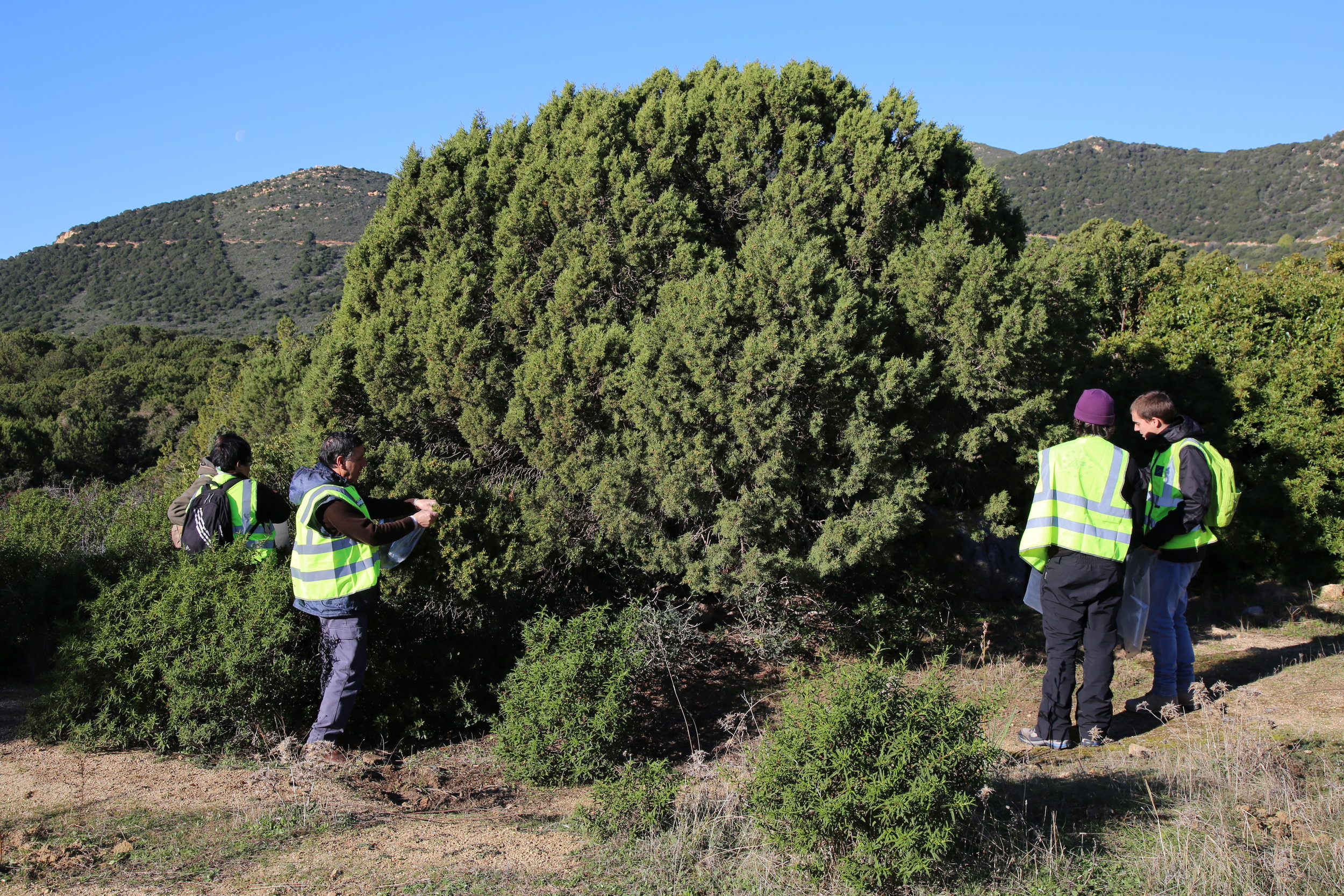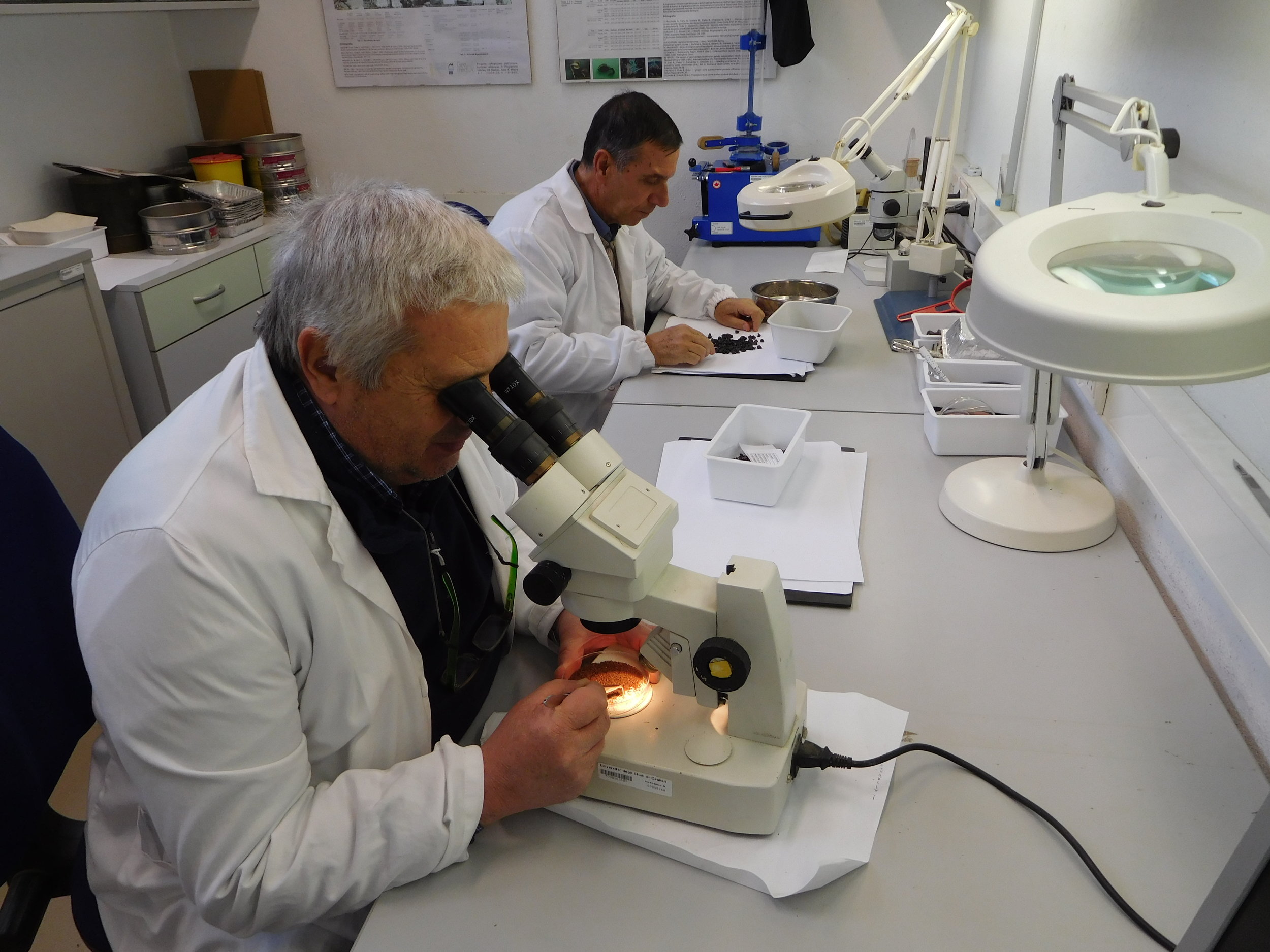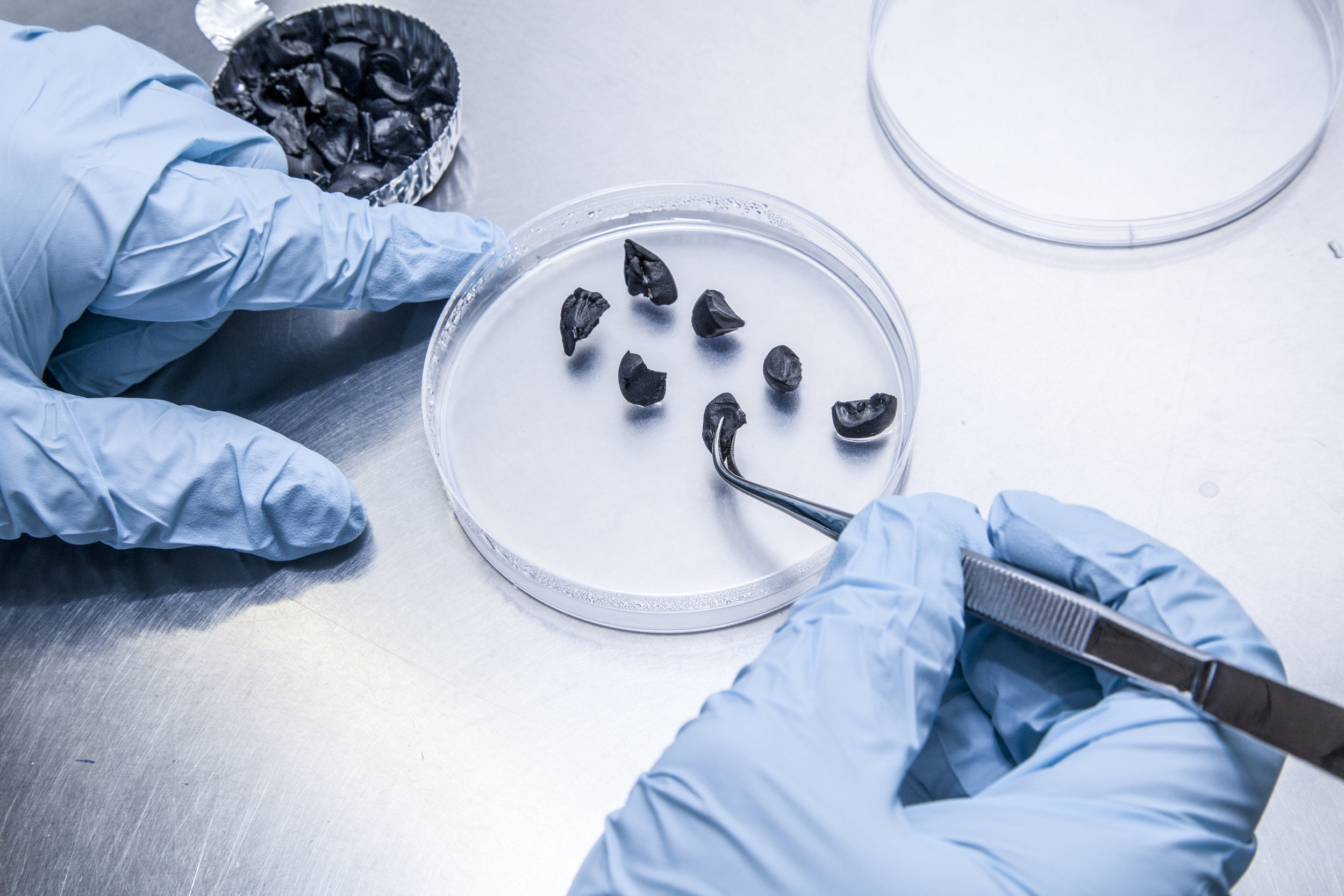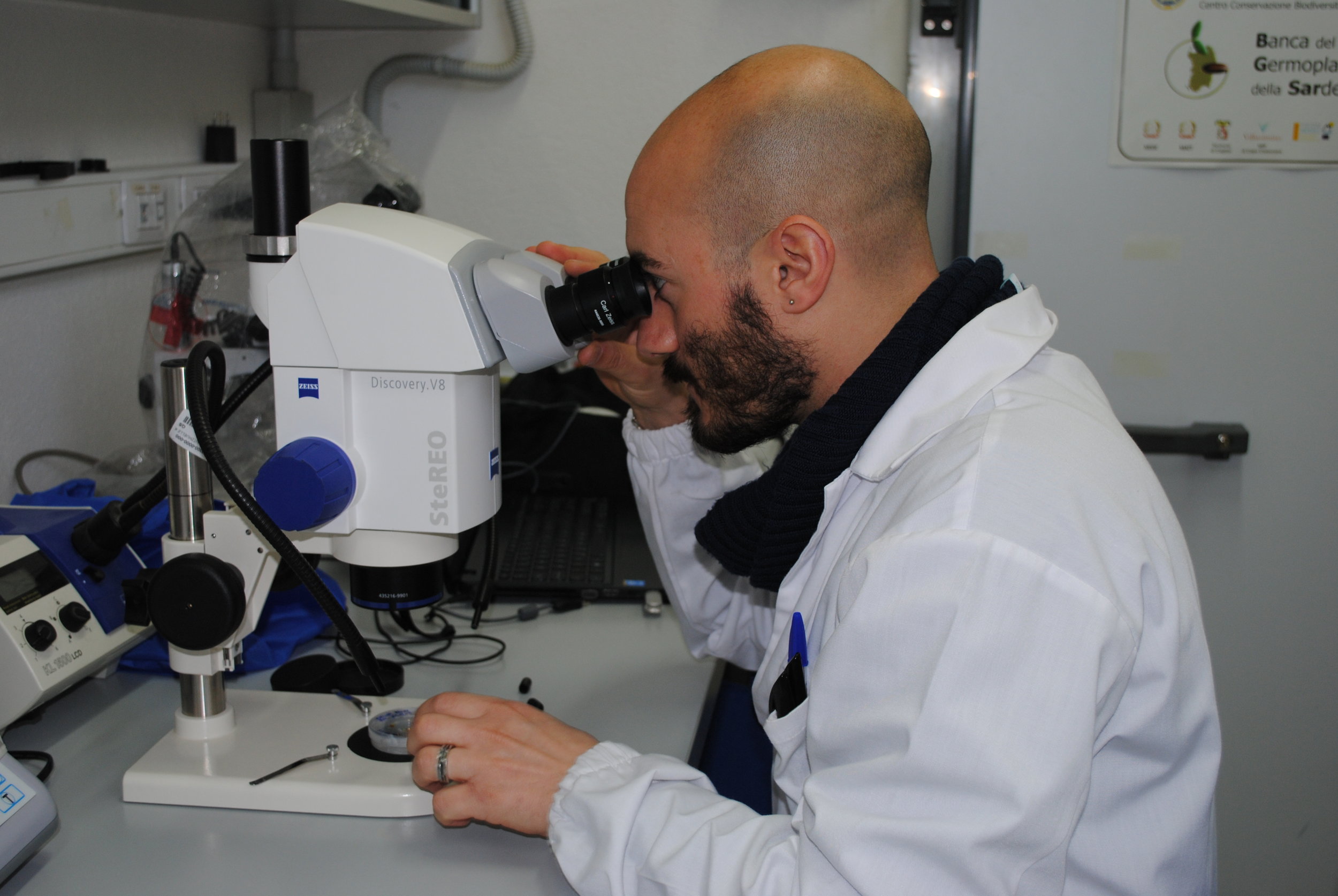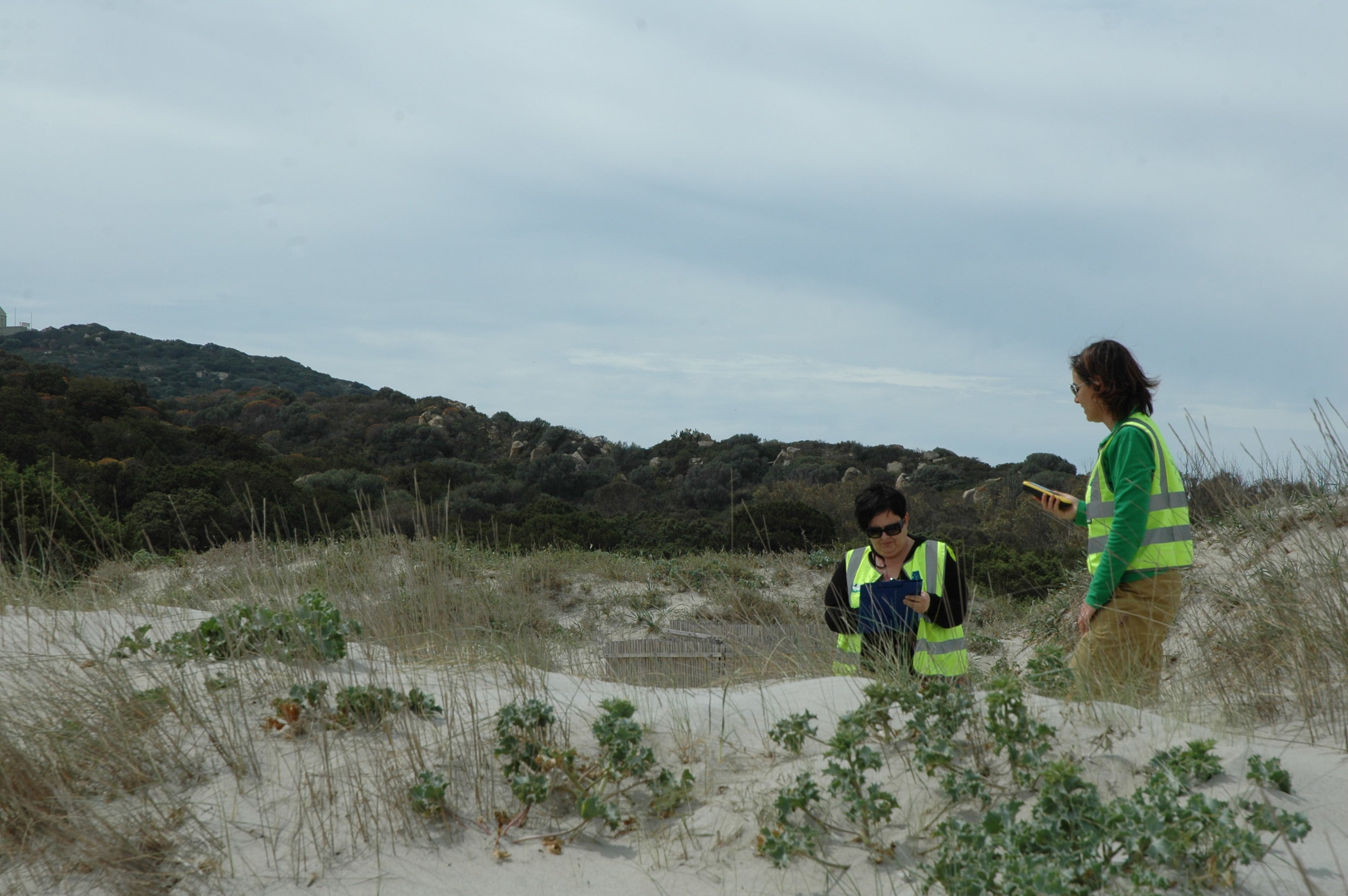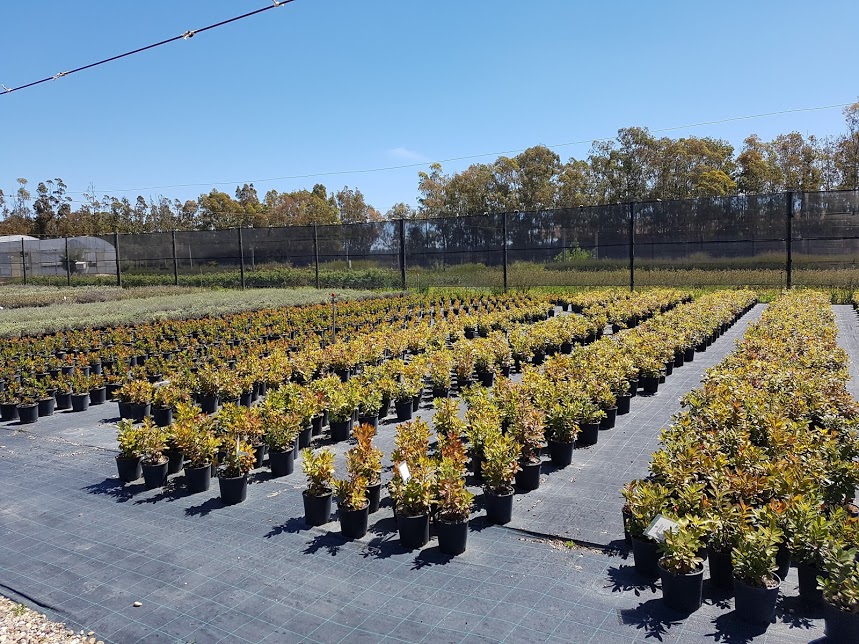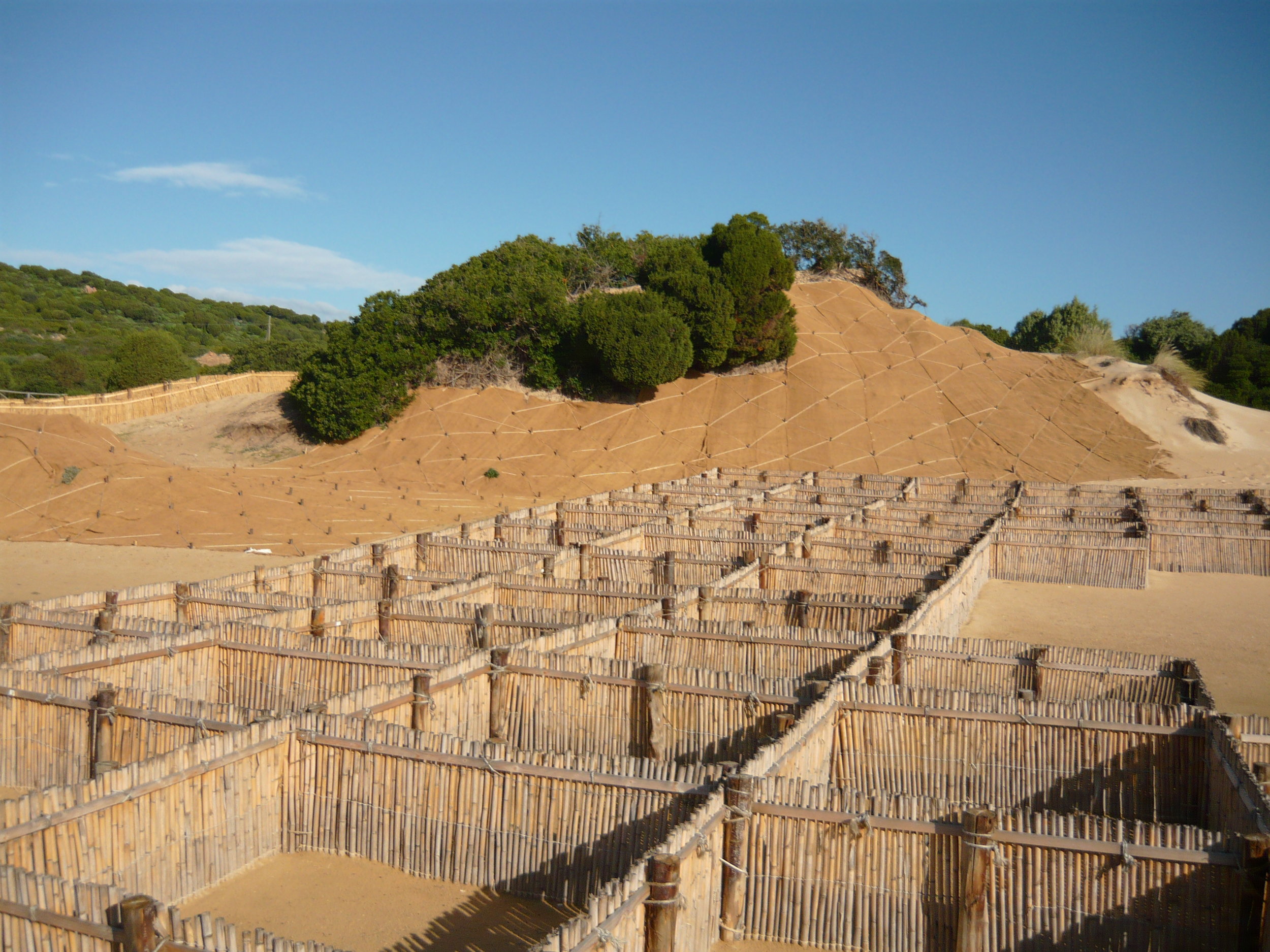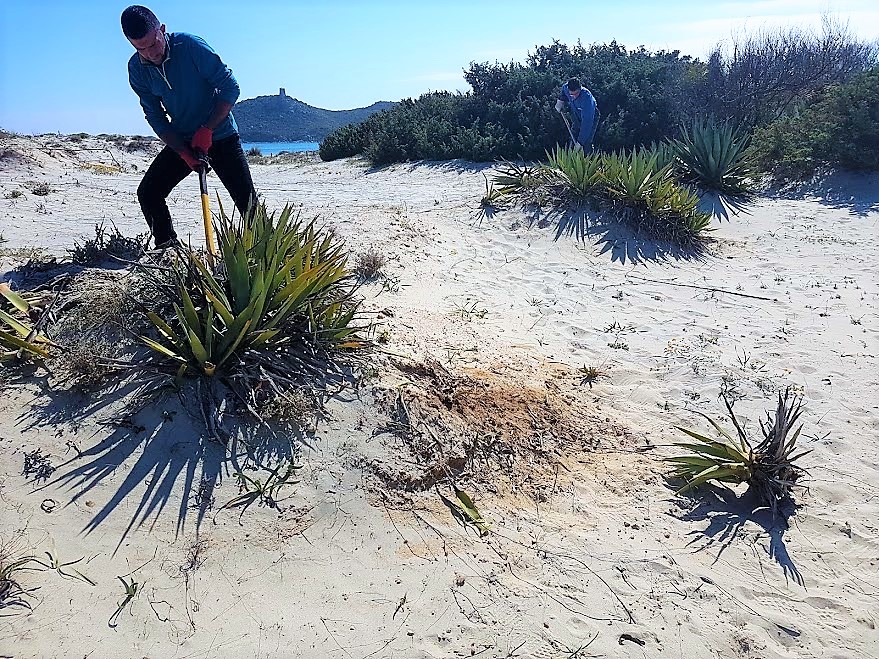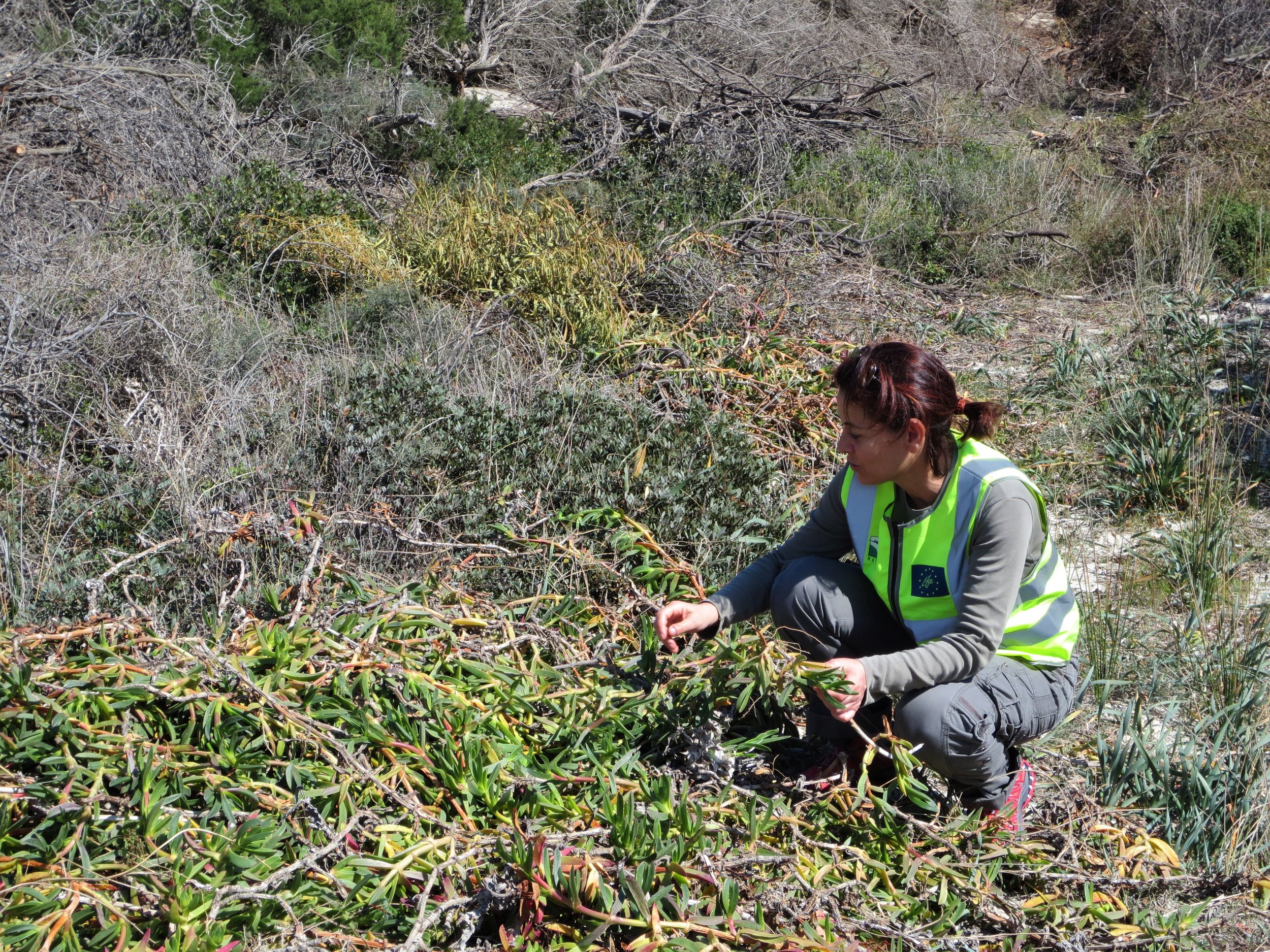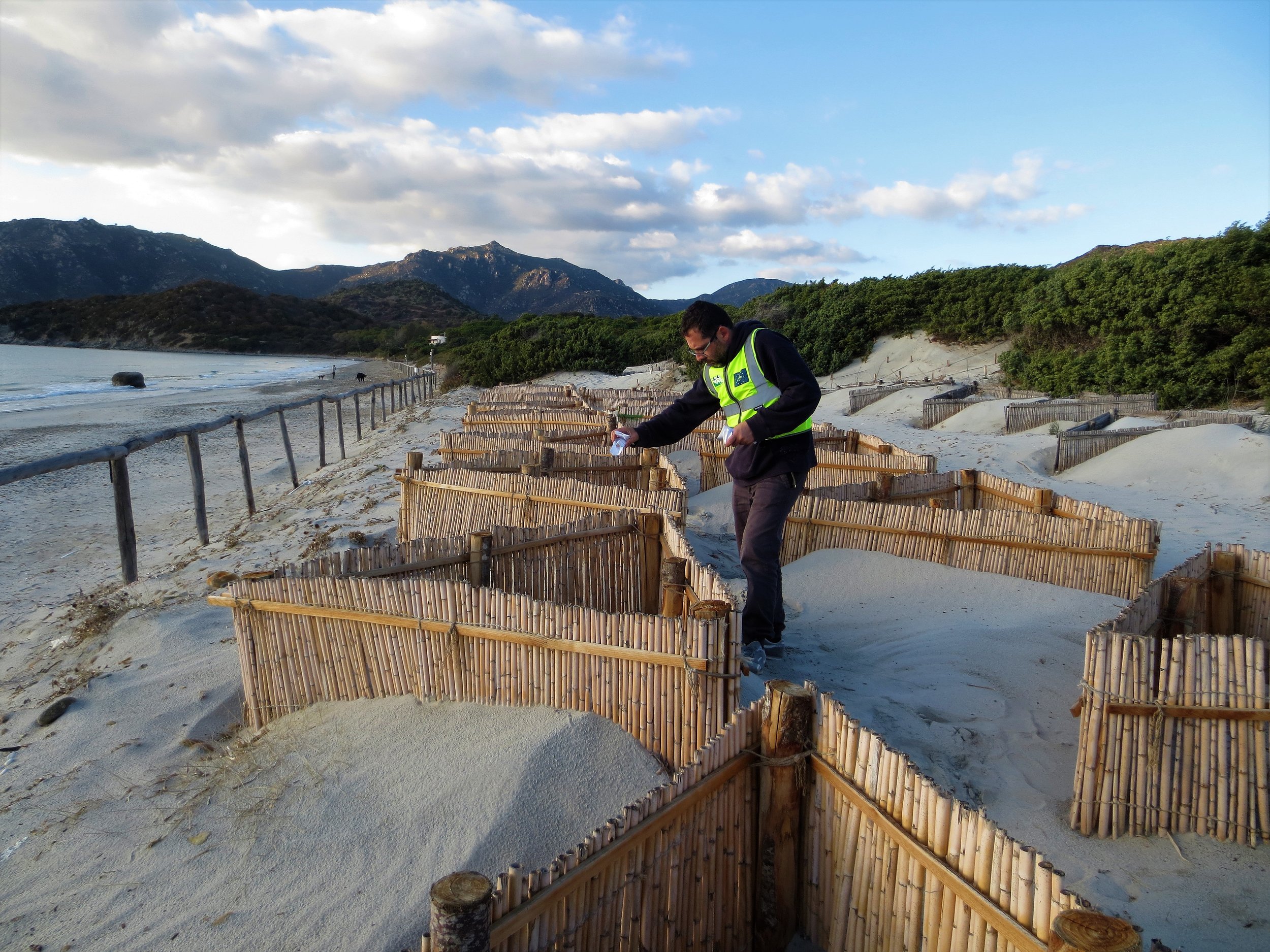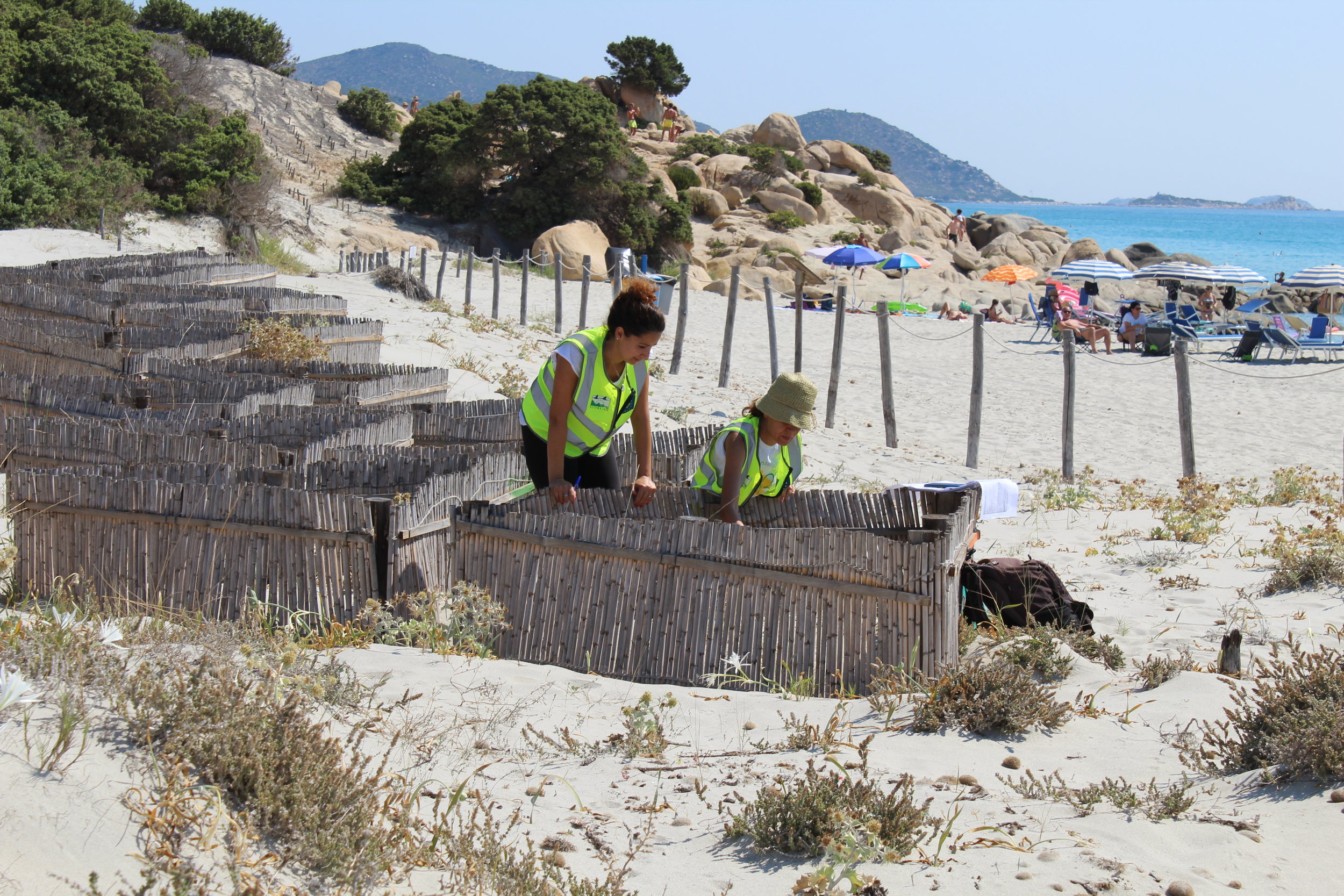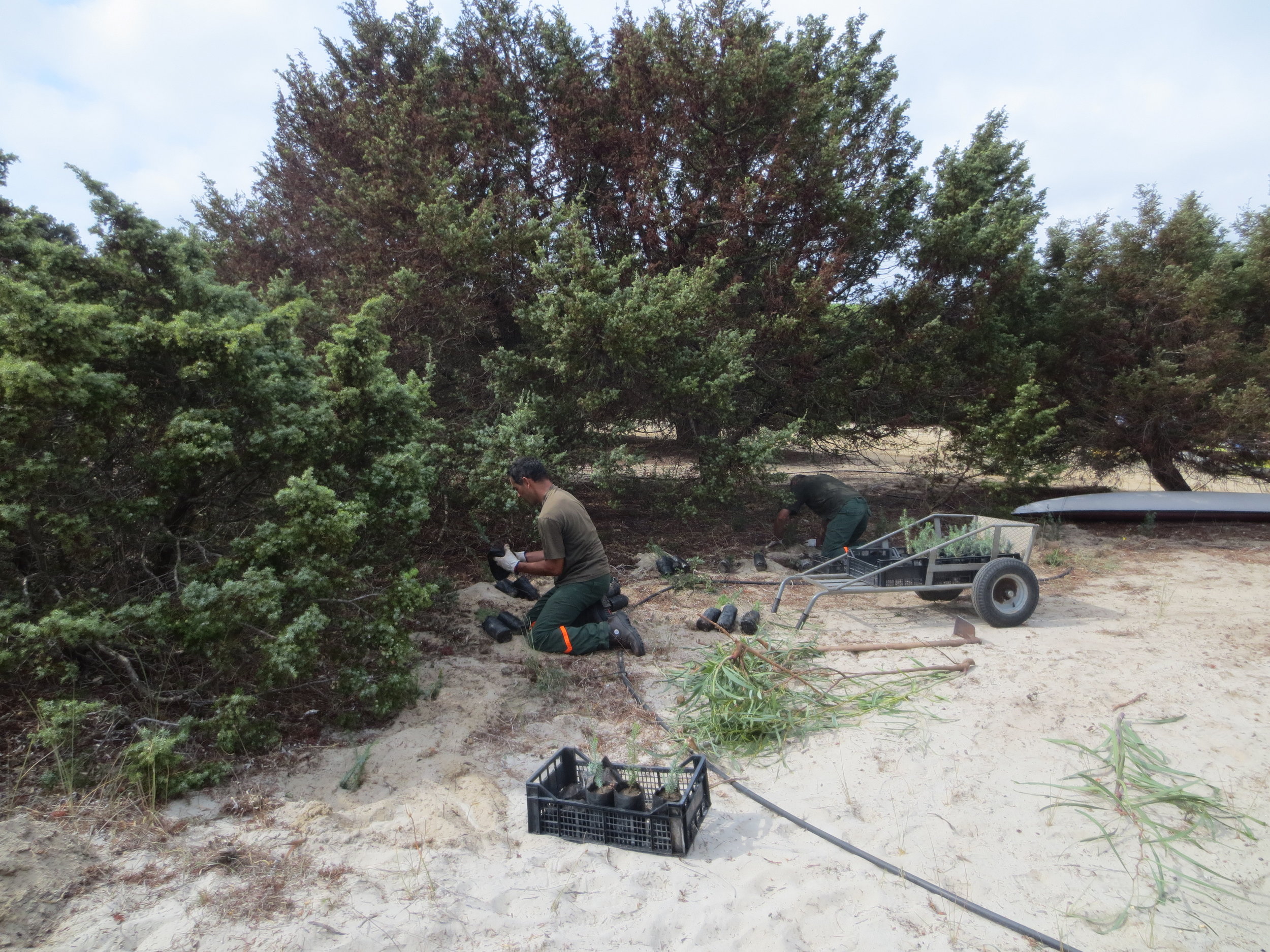G. Bacchetta1-2, F. Meloni1-2, M.S. Pinna1, L. Podda3, M. Porceddu1-2, A. Sanna4
1 Centre for the Conservation of Biodiversity (CCB), Life and Environmental Sciences Department (DISVA), University of Cagliari,Viale S. Ignazio da Laconi 11-13, 09123 Cagliari, Italy
2 Sardinian Germplasm Bank (BG-SAR), Hortus Botanicus Karalitanus (HBK), University of Cagliari, Viale S. Ignazio da Laconi 9-11, 09123 Cagliari – Italy; contact: bg-sar@unica.it
3 Agriculture Department, University of Sassari, Viale Italia 39, 07100 Sassari, Italy
4 Metropolitan City of Cagliari, Via Diego Cadello 9b, 09121 Cagliari, Italy
The Mediterranean Basin is one of the most important plant diversity hotspots worldwide; however, its sandy coasts are affected by strong erosive processes, also accentuated by the disappearance of dune and submerged vegetation caused by human exploitation. Therefore, in the Mediterranean area, plant conservation and ecological restoration are of major importance for the sustainable development. Through naturalistic engineering interventions, it is possible to implement anti-erosive, stabilizing and consolidation actions for the protection and restoration of dune ecosystems. Such restoration practices, using native and locally adapted plant species, can contribute to habitat regeneration, long-term protection and enhancement of the Mediterranean natural heritage. The increasing use of native plants in restoration activities significantly contributes to the conservation of the indigenous plant communities as well as their genetic diversity.
Starting from 2004, GENMEDOC (Création d’un réseau de centres de conservation du matériel génétique de la flore des régions méditerranéennes de l’espace MEDOCC) and SEMCLIMED (Impact of the Climatic Change on the Mediterranean Flora and Conservation Actions) international projects laid the foundations for the creation of a plant conservation network at Mediterranean level; indeed, in 2010, 13 members founded GENMEDA (Network of Mediterranean Plant Conservation Centres). Since 2011, some members of this network collaborated in several international projects, such as the ECOPLANTMED (ECOlogical use of native PLANTs for environmental restoration and sustainable development in the MEDiterranean region; see manuals) and CAREMEDIFLORA (Conservation Actions for Threatened Mediterranean Island Flora: ex situ and in situ joint actions) projects, aimed at plant diversity conservation in the Mediterranean area.
One of the partners that participated in these international projects is the BG-SAR (Sardinian Germplasm Bank), a facility of the Hortus Botanicus Karalitanus (HBK) of the University of Cagliari, that preserves, studies and manages the germplasm of plant species of Sardinia as well as of other Mediterranean islands (Porceddu et al., 2017). BG-SAR collaborated also in several international projects focused on the conservation and restoration of threatened plant populations and habitats in the Mediterranean Basin, such as PROVIDUNE and RESMARIS.
The LIFE PROVIDUNE project (2009-2014) “Conservation and restoration of habitats dune in five Site of Community Importance (SCI) areas of the Provinces of Cagliari, Matera and Caserta”, financed by the European Union for the years 2009-2014, was aimed to protect and restore the priority coastal dunes habitat with Juniperus ssp. (2250*) and other related habitats characterizing the Mediterranean sandy coasts. The project was focused on geobotanical studies, ex situ conservation and restoration activities carried out in three Site of Community Importance (SCI) in South Sardinia: “Porto Campana” (ITB042230), “Stagno di Piscinnì” (ITB042218) and “Isola dei Cavoli, Serpentara, Punta Molentis e Campulongu” (ITB040020); additional sites included in the conservation activities are “Is Compinxius - Campo dunale di Buggerru - Portixeddu” (ITB042249) and “da Piscinas a Riu Scivu” (ITB040071; Pinna et al., 2017).
The Site of Community Importance Isola dei Cavoli, Serpentara, Punta Molentis e Campulongu
The geobotanical analyses were carried out to characterize the flora and vegetation of the Juniperus habitat. To perform the ex situ conservation of coastal dune plants, germplasm (seeds and fruits) was collected following internationally recognised protocols and guidelines (Bacchetta et al., 2004, 2006, 2008) and stored at BG-SAR; moreover, effective protocols for the germination of 12 key species of the Juniperus habitat were developed, to support their propagation and population reinforcement [(Ammophila arenaria (L.) Link subsp. australis (Mabille) Lainz, Anthemis maritima L., Cistus salviifolius L., Crucianella maritima, Elymus farctus (Viv.) Runemark ex Melderis subsp. farctus, Eryngium maritimum L., Juncus maritimus Lam., Juncus subulatus Forssk., J. macrocarpa Sm., J. phoenicea L. subsp. turbinata (Guss.) Nyman, P. maritimum L. and P. lentiscus L.)]. An experimental project to reinforce the native populations of structural species of coastal habitats (such as Pancratium maritimum, Pistacia lentiscus and J. macrocarpa) through sowings, was realized. Grafting groups (sand trap systems that encouraged the embryonic dunes formation and dune consolidation), and permanent plots (bio-mats coconut fibres installed to reduce wind erosion and protect the plant roots) previously installed, have been used with the aim to facilitate the population reinforcement process and contain habitat fragmentation. Specifically, fruits of J. macrocarpa and P. lentiscus were manually sown in coir mesh (below 12 biodegradable protection systems of the fixed dunes covering a surface-area of 20 m2 each), while seeds of P. maritimum were sown in the grafting groups (inside 40 sand fences of embryonic dunes covering a surface area of 2.5 m2 each), with a density of 100 seeds/m2. Restoration actions were performed ensuring the manual removal of invasive alien plant species and the subsequent planting of native ones. Other measures to reduce the human impacts, mainly due to trampling, were realized, such as wooden walkways and light fences.
The practical conservation actions of the PROVIDUNE project acted like a brake on the threatening factors, and on the impact of human presence in the summer months. The filling of the sand traps and the effectiveness of the coir mesh are directly observable in the sites, and the walkways, fences and other works have already been used and have begun to produce positive effects.
The RES MARIS project (2014-2018) aimed at the conservation and recovery of marine and terrestrial ecosystems included in the marine SCI "Isola dei Cavoli, Serpentara, Punta Molentis e Campulongu" (Acunto et al., 2017). The terrestrial habitats selected for the implementation of the project are "Coastal dunes with Juniperus spp." and "Wooded dunes with Pinus pinea and/or Pinus pinaster". They are characterized by a high biodiversity and exclusive vegetal and animal communities and can easily undergo both floristic and faunal changes. The floristic analysis of the coastal dune systems led to the creation of a list of 127 native and 91 alien taxa. Among these, the most invasive species were those belonging to the genera Carpobrotus, Agave and Acacia, which were eradicated from 19,000 m2 inside the priority habitats, and those connected to them in a catenary succession, and from about 40,000 m2 of public areas adjacent to the previous ones. In the same areas the renaturation actions were carried out, through naturalistic engineering interventions (positioning of cane structures for sand retention and consequent recovery of the dune profile, positioning of coconut fibre bionets to avoid erosion, particularly after the eradication), plantation and sowing of plant species characteristic of coastal dune systems. Indeed, fourteen structural and functional plant species of dune habitats were selected: [Juniperus macrocarpa Sibth. & Sm., Juniperus phoenicea L. ssp. turbinata (Guss.) Nyman, Pistacia lentiscus L., Pancratium maritimum L., Eryngium maritimum L., Elytrigia juncea (L.) Nevski, Cistus salviifolius L., Achillea maritima (L.) Ehrend. & Y.P.Guo subsp. maritima, Pycnocomon rutifolium (Vahl) Hoffmanns. & Link., Glaucium flavum Crantz, Rhamnus alaternus L., Helichrysum microphyllum (Willd.) Camb. subsp. tyrrhenicum Bacch., Brullo & Giusso, Crucianella maritima L., Ammophila arenaria subsp. arundinacea H. Lindb.].
The germplasm was collected, representative of the genetic diversity of the site of intervention, and the seeds were tested at BG-SAR, in order to define optimal germination protocols for each selected species and to ensure the availability of plant materials to use in restoration and revegetation actions. Starting from the collected germplasm, based on the best germination protocols developed during the project, a total of 30,000 plants were propagated and reintroduced in the dune habitat subject to the restoration action; in addition, 25,000 seeds were sown.
“All habitats affected by the projects and their related species, benefited directly from the drastic reduction of trampling, the eradication of invasive alien species and the naturalistic engineering aimed at dunes restoration. Moreover, the plantation and sowing interventions contributed to the reinforcement of native populations and the mitigation of the impacts produced by tourism and infrastructures.”

